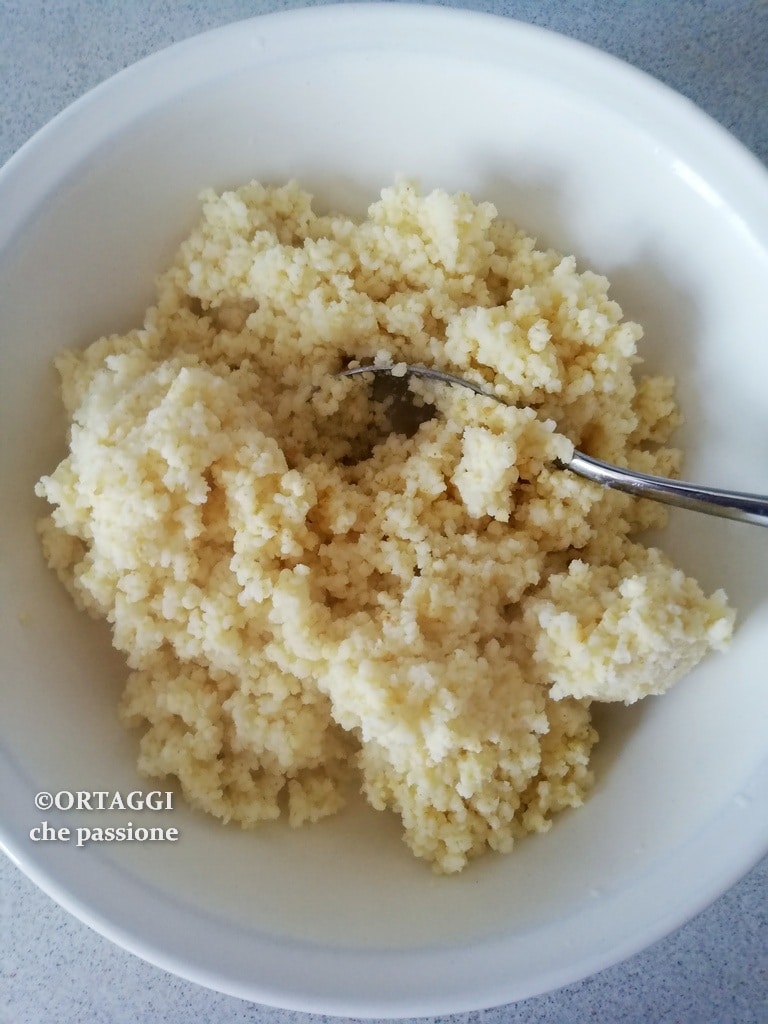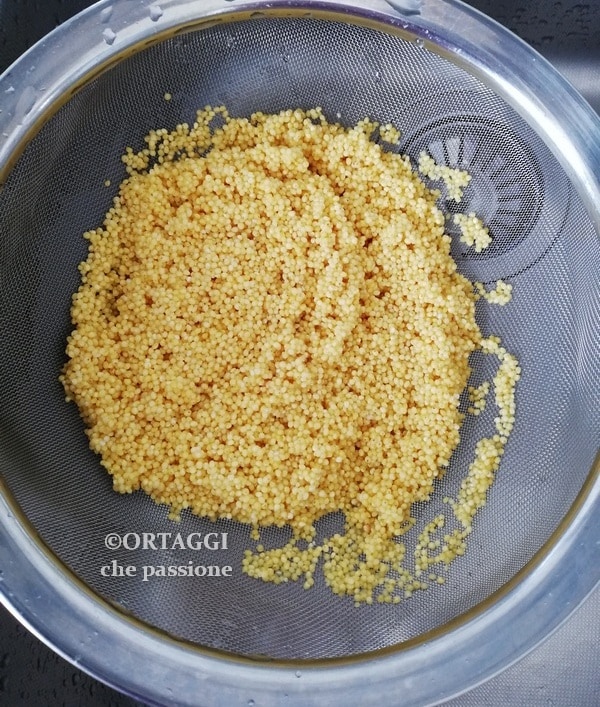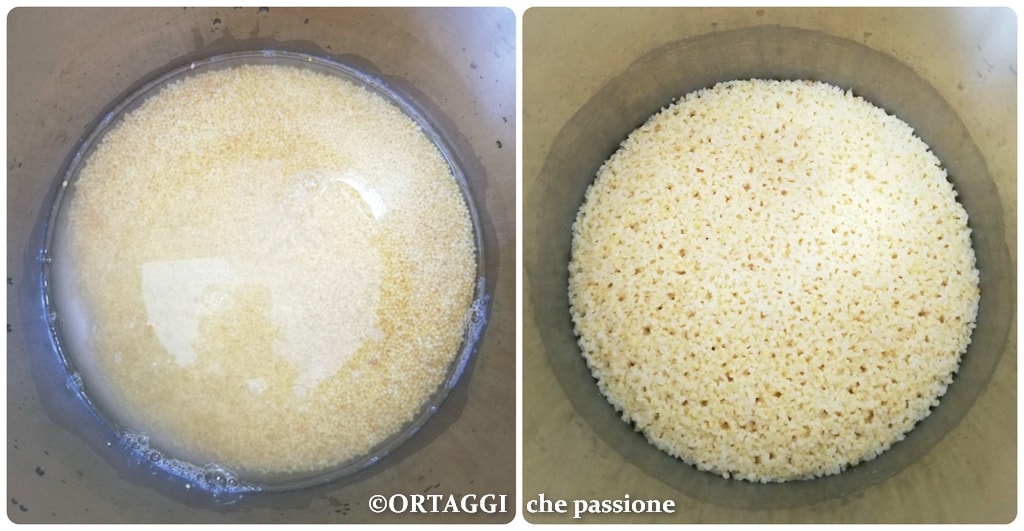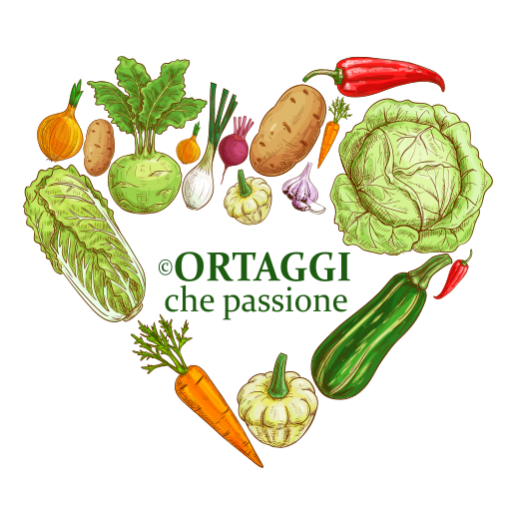Hulled (or semi-whole) millet is a great gluten-free cereal and is very versatile. It is cooked like risotto or couscous and can be used as a substitute for pasta. A practical cereal for preparing soups or creams with the Thermomix. It’s used to make coarse polenta or as a base for meatballs, and it’s also an excellent source of carbohydrates for a healthy and light breakfast. And for those with a sweet tooth, it can be used in various sweet recipes.
What does millet taste like? Its flavor is delicate and slightly sweet. Once cooked, it becomes soft, and the longer it cooks, the softer it gets.
The millet plant is herbaceous and annual, with an appearance similar to other cereals. It grows to a height of 3.3 – 5 feet. It has long, narrow leaves and produces spikes of small round grains. The spikes can be drooping or erect, depending on the variety. The grains, once mature, are harvested for use as food.
RECIPES and cooking of gluten-free cereals

- Difficulty: Easy
- Cost: Economical
- Rest time: 5 Minutes
- Preparation time: 10 Minutes
- Portions: 4People
- Cooking methods: Stove, Pressure cooker
- Cuisine: Healthy
- Seasonality: All seasons
- Energy 213.75 (Kcal)
- Carbohydrates 42.38 (g) of which sugars 3.06 (g)
- Proteins 6.88 (g)
- Fat 2.63 (g) of which saturated 0.00 (g)of which unsaturated 0.00 (g)
- Fibers 1.94 (g)
- Sodium 393.71 (mg)
Indicative values for a portion of 200 g processed in an automated way starting from the nutritional information available on the CREA* and FoodData Central** databases. It is not food and / or nutritional advice.
* CREATES Food and Nutrition Research Center: https://www.crea.gov.it/alimenti-e-nutrizione https://www.alimentinutrizione.it ** U.S. Department of Agriculture, Agricultural Research Service. FoodData Central, 2019. https://fdc.nal.usda.gov
Ingredients
PORTIONS per person of raw millet:
– grams 30-50 if added to soup, meatballs, or used as a side dish or in cold salads
– grams 60-80 if used as the main course (first course or poke)
- 9 oz hulled millet (1 glass)
- 2.4 cups water (2 glasses)
- to taste salt (1 teaspoon)
Tools
- Strainer fine mesh
- Pan steel
Washing and cooking time
Does not require soaking.
Hulled millet should be washed thoroughly under running water to remove any impurities. Continue to rinse it until the water is clear and clean. I also recommend using a fine mesh strainer to prevent its small grains from being lost.
To reduce water waste, you can opt to stir the grain in a basin and change the water periodically.
Why wash millet?
It is important to carefully wash millet (and also quinoa) to remove any traces of saponins, substances that besides being indigestible, give it a bitter taste.

Pour the rinsed millet into the pan (or pressure cooker) and cover it with water, adding salt.
Turn on the heat and bring to a boil (or wait for the classic whistle of the pressure cooker).
Then, lower the heat and continue gentle cooking.
Cooking time by absorption in PAN:
– hulled millet (cooks in about 15 minutes)
– whole millet (cooking time is about 40 minutes)
Cooking time by absorption in PRESSURE COOKER:
– hulled millet (cooks in about 5 minutes from the whistle)
– whole millet (cooking time is about 15 minutes from the whistle)
Once the cooking time has passed (in a pot or pressure cooker), turn off the heat and let it rest for a few minutes in the closed pot, allowing it to absorb the remaining water.
Its texture, once cooked, is very similar to couscous. Before serving it, it’s better to fluff it with a fork and then add your preferred ingredients. To make it more flavorful, you can season it with a drizzle of extra virgin olive oil.
If you cook millet a few minutes longer, it becomes soft and creamy, thus achieving the ideal consistency for preparing meatballs or porridge.

STORING cooked millet
Once cooled and transferred to airtight containers, it can be stored in the fridge for up to 5 days.
For longer storage, freeze in portions in freezer-safe bags. Before consuming, defrost it in the fridge or reheat it with a bit of water or broth.
FAQ
What are the uses of millet?
This cereal has a delicate and neutral flavor and thus suits both savory and sweet dishes. Perfect for preparing a coarse polenta, a summer salad, meatballs, and stuffings. It can be added to soups, broth, and stews. It pairs well with all vegetables.
It is also available as millet flour (for making crepes or baked goods), or puffed flakes, ideal for breakfast and adding to milk, yogurt, or Kefir.How often can you eat millet?
It can be eaten safely 2-3 times a week. It is an excellent addition to a balanced diet due to its numerous benefits. This cereal is highly digestible, provides lasting energy, and contributes to overall well-being.
TYPES OF MILLET:
whole brown – hulled
millet flour – puffed flakesTYPES OF MILLET:
whole brown – hulled
millet flour – puffed flakesDoes millet make you gain weight?
Millet, on its own, does not cause weight gain. It is a nutrient-rich cereal with a low glycemic index. The important thing is to consume it in moderate portions and pair it with vegetables and lean proteins. In essence, millet can be part of a healthy diet without causing weight gain.
What is it good for?
It is a good source of fiber and protein, in addition to being gluten-free. It regulates intestinal functions and helps maintain a healthy weight, improves heart health, and strengthens bones.
What are its properties?
Millet is a nutrient-rich cereal. It contains complex carbohydrates, proteins, fibers, B vitamins, and minerals such as magnesium, phosphorus, and iron. It has a low glycemic index, which helps keep blood sugar levels stable. It is easy to digest and can contribute to satiety.
What are the contraindications?
Millet is generally safe, but it can interfere with thyroid function or cause allergies. Avoid in case of nickel sensitivity.
Is millet beneficial for hair?
Yes, this cereal is beneficial for hair. It is rich in proteins, B vitamins, and minerals like silicon, which strengthen hair and promote growth. Consuming millet can contribute to healthier and stronger hair.

